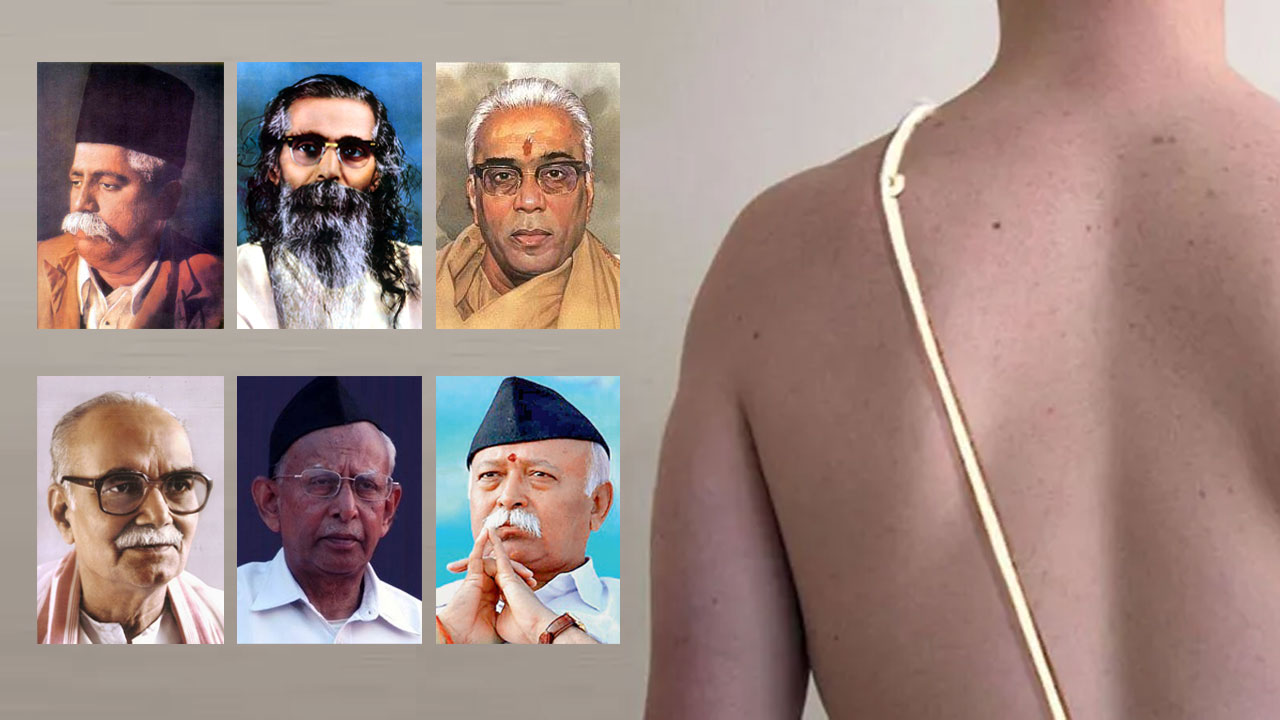A sense of superiority is one of the key elements of hegemony. In the colonial era, European colonizers harboured a sense of civilizational superiority and responsibility with respect to the colonized, giving the rise to the proverb, “the burden of civilization”. This eventually gave them a sense of entitlement to lord over their subjects. Racism has had to do with a sense of European superiority over people of African origin. A sense of superiority underlies casteism in India, too. Ish Mishra attempts to unravel this sense of superiority. This is the first article in a series. – Editor
A sociological analysis of slavery and the ideology of racism
The flames of an anti-racism movement have engulfed the whole world following the brutal murder of George Floyd, an African American who was taken into custody and murdered by a white policeman for allegedly using a forged bill, in the city of Minneapolis, in Minnesota, USA, on 29 May 2020. This movement seeks to challenge the very idea that legitimized slavery in the colonial era. The symbols of that era are being attacked and destroyed. In Boston, a statue of Christopher Columbus was uprooted and dumped in a lake. In other US cities, too, busts and statues of Columbus and other apologists of slavery were vandalized. In Bristol, England, the bust of Edward Colston, a 17th-century slave trader, was broken and thrown into river. Several other such statues, including of Queen Victoria, were defaced in Britain. The mayors of many British towns are mulling over whether the symbols and statues of the colonial era should be pulled down. This is a defining moment for the white supremacists who boast of having civilized the world. Tearing down the statues of colonialists, advocates of slavery and slave traders won’t change history but it can lead to a re-interpretation of the chronicles of the past which describe how certain people civilized the others and that re-interpretation, in turn, can teach us valuable lessons. Many states and cities in the US have begun considering new laws to reform the policing system.
Even as the “Black Lives Matter” movement was spreading like wildfire in America and Europe and the people were seething with anger over police brutalities, a Dalit youth was done to death by upper-caste men in a village in Amroha district of Uttar Pradesh, India, on 6 June 2020. The murder followed a dispute over performing puja in a temple. Over the past three years, the Uttar Pradesh police have killed many people in cold blood on the pretext of eliminating crime. In different parts of the country, blood-thirsty mobs of communalists and religious fanatics have lynched several members of the minority community during the last few years, particularly since 2014 after the Bhartiya Janata party came to power in the Centre. But these incidents have evoked only muted protests.
Be that as it may, comparing the reaction of the common man to almost identical developments in India and the West is not the subject matter of this article. It merits a separate discussion. Though the popular resistance to the injustice rooted in racism is as old as racism itself and has been evolving with time, the wide canvas and the geographical expanse of the ongoing movement seems to indicate that it may strike a decisive blow against the ideology of racism.
A reference to communal, casteist discrimination and violence in India in the context of the global movement against racism is meant just to underline the commonalities – that all three are rooted in historical factors and that their elimination is not only possible, but also inevitable. The Varnashramvad (casteism or Brahmanism) – an ideology constructed to perpetuate the hegemony of the parasitic (upper-caste) class – is thousands of years old. The history of racism goes as far back as the ancient Greek philosopher Aristotle, who pioneered the idea that humans are unequal. In the modern era, its genesis can be traced to the 18th century, when slave labour became the engine of growth of the American economy.

Aristotle considered slavery as indispensable and natural and believed that the “barbarians” (non-Greeks) were natural slaves. The ideology of communalism in India is a little more than 150 years old. It was created by the British colonial rulers to further their policy of divide and rule. Shaken to the core by the peasant revolution of 1857, the British concluded that they can perpetuate their rule only by dividing Indians along communal lines. After their exit from the Indian subcontinent, the communal forces, both in India and in Pakistan, used it as a rallying point. According to the dialectical materialism, anything that exists is destined to end and the aforementioned ideologies are not exceptions. A comparative study of racism – an ideology crafted in America and Europe for enslaving the people of African origin; Varnashramvad (Brahmanism) – an ideology of upper-caste supremacism; and communalism – an ideology used by religious fanatics for political mobilization and which is a political version of Brahmanism – is eminently desirable. But there is little scope for it here.
The Black Lives Matter protests are a continuation of the movement that began with the American civil war of the 1860s. This movement seeks to assert the identity of the non-whites. The Civil Rights Movement of the 1950-60, which began with Rosa Parks, a black woman, refusing to vacate her seat on a bus for a white man, was a major milestone of this movement.

Other milestones of this movement include the protests that followed the acquittal of the policemen who had tortured black American citizen Rodney King in 1992, the 500th year of the arrival of Columbus in America, and the release, in 2013, of George Zimmerman, a policeman responsible for the murder of a black minor, Trayvon Martin, in 2012. The movement was reignited in Ferguson and New York with the hashtag #BlackLivesMatter and by 2014, had assumed the form of a nationwide campaign on social media.
Racism is not based on genetic attributes, nor is it an eternal idea like “Satyamev Jayate” (Truth alone triumphs) that has been passed on from one generation to another. Racism, like communalism, Brahmanism (casteism) or patriarchy, is not an idea but an ideology which is created, recreated and nurtured in day-to-day life experiences and intellectual discourse. An ideology represents a false consciousness in the sense that it presents and portrays a certain historical construct as the final or the obvious truth. In America, the ideology of racism can be seen as a legacy of Columbus.
Driven by his desire for gold and silver, Columbus, a Spanish trader, set out for India, but he lost the way and in October 1492, landed in America and “discovered” the “New World”. This “discovery” inaugurated a new historical era – an era of imperialistic exploitation, loot and pogrom, which is yet to see its end. The “discovery” of the New World by Columbus is itself a myth. America had been discovered thousands of years before Columbus stepped on its shores and boasted of a flourishing and advanced civilization. What was “new” about Columbus’ discovery was that it led to an unprecedented massacre of the indigenous inhabitants of America and the destruction of the majestic Aztec Civilization. Transporting and enslavement of Africans and the fashioning of the ideology of racism to legitimize it, followed.
Worldwide protests led to the charging of Derek Chauvin, the policeman who murdered George Floyd, with second-degree murder, a crime punishable with a minimum sentence of 12 years in jail. However, in 1992, when Europe and America were celebrating 500 years of Columbus’ “discovery”, the white policemen who had assaulted a black American, Rodney King, were acquitted by the white judges of Los Angeles. The judgment not only underscored the racist bias of the American justice system but also proved that the judgments of American courts are not based on evidence but on the white supremacist ideology of the judges. Three decades on, the way people rose in their millions to protest the murder of George Floyd at the hands of the racist police shows that we are well past the era when the people of African origin could be enslaved and driven like animals. The humanistic consciousness against racism has gained so much strength that denial of justice to victims of racial barbarism such as a Floyd or a King is bound to be met with stiff resistance.
In 1992, when the custodians of justice turned a deaf ear to the plaintive cries of Rodney King, the simmering anger against racism spilt onto the streets of American cities, though its intensity and canvas was much less than the ongoing Black Lives Matter movement.
Starting at Minneapolis, this movement has engulfed vast parts of the world and is posing a tough challenge to the legacy of Columbus. It would be a digression to discuss how Columbus’ so-called discovery was followed by the destruction of advanced civilizations like the Aztec and the Inca and the barbaric massacre of the indigenous inhabitants of America. Dee Brown’s Bury My Heart at Wounded Knee provides a moving description of the lofty moral principles and valour of the indigenous inhabitants and the horrifying atrocities perpetrated on them by the barbaric Europeans.
The white supremacists of European origin believe that the blacks are racially prone to criminality and hold them responsible for the crimes in America. Over the past couple of decades, the anti-racist sentiment has grown so strong that editors of many publications have had to pay with their jobs for making adverse comments about the anti-racism movement. In 1992, Andrew Sullivan of the Daily Telegraph, while shedding copious tears on the deleterious fallouts of the anti-racism protests, tried to obliquely justify the merciless thrashing of Rodney King. Baring his racist mindset, he wrote that the judgment of the Los Angeles court should be seen in the wider context of “who commits more crimes” and, employing statistical jugglery, tried to prove that the people of African origin are “born criminals”.
In January 1988, Jimmy “The Greek”, a sports commentator for an American TV network, claimed that the whites wouldn’t get any place in basketball teams if the coaches, too, were non-whites. He also said that the blacks are better basketball players because they have bigger thighs. He went on to flaunt his knowledge of biological evolution by claiming that during the slave trade years, the slave owner would organize the mating of a healthy slave woman and man to have huge a black child.
This biological interpretation of race was not limited to sports commentators like “The Greek”. Those claiming to be educated and living off the claim weren’t far behind. Richard Cohen, a well-known liberal journalist of Washington Post, came out in support of “The Greek” and mocking anthropologists and biologists propounded the theory of “white genes”. Journalists like Sullivan and Cohen sought to define physical features in terms of race and used circular logic to prove the ideology of racism with that definition.
This “biological understanding” of race was by no means the exclusive preserve of half-baked journalists. In May 1987, a group of Arabic and Jewish citizens of America filed a petition in the Supreme Court of the country seeking protection under the Civil Rights Act, 1888. Instead of disposing of the plea on the basis of the well-established democratic principle of no discrimination against anyone, the Supreme Court sought to know whether Arabs and Jews were racially different from Caucasians and said that they would be entitled to protection under the Act only if they were different. It went on to say that Arabs, Jews and many other nationalities were considered racial groups till the 19th century, so they could be considered the same even 100 years later.
The American Supreme Court probably did not have an option. After all, it is also a part of the American legacy, the foundation of which has been plastered with the blood of innumerable Red Indians, indentured servants and slaves. Most of the white Americans consciously or subconsciously believe in the crooked theory that the people of African origin are a different class of human beings, whose actions, words and thoughts are all dictated by their race. The white intellectuals find the word “European Americans” contrived but “African Americans” natural. Just as the application forms for many secular educational institutions in India have columns for the religion and the caste of the applicants, similarly application forms for American educational institutions also ask for the applicant’s race. That is why in America, there is “beauty contest” and Black beauty contest”; there are “poets” and “black poets”; John Updike is a “writer” while Toni Morrison is a “black writer”; George Bush was a “presidential candidate” and Barack Obama, a “black presidential candidate”. However, thanks to the evolution of collective social consciousness in the five decades since the 1950s, Obama was elected president. It is to be noted that he got issue-based support from all sections of American society. It was not that only the African Americans backed him.
The absence of the words like white and black in the American Constitution, which came into being in 1789 after the anti-colonialism revolution, should not surprise us. The Constitution used the words “free persons” and “other persons” (a euphemism for slaves). However, the Constitution did say that three fifths of all “other persons” (ie slaves) will be counted for both taxation and representation. The problem with the American Constitution-makers was that they held the Statue of Liberty in one hand and the profits from the slave trade in the other. In 1776, some colonies in North America had attained freedom but not the slaves in these colonies. Even during the civil war, both the opponents and the supporters of the slavery concurred that the system of slavery was due to deficiency of slaves themselves and had nothing to do with the legacy of Columbus. Both considered slavery as natural and racism as axiomatic.

Many American historians interpret slavery as a system that defined racial relations and also that its objective was not the production of tobacco, rice, tea, cotton and sugar but the establishment of white supremacy. The complexion of the Irish people was no different from that of the English. But still, the English used the same barbaric arguments to justify their oppression – the arguments they used to justify the oppression of the people of African, Asian and American origin. In ancient Greece and Rome, masters and slaves were not distinguishable by the colour of their skin or their physical features. Those who met a horrific end in Hitler’s gas chambers included not only Jews and gypsies but also Communists and other political opponents of the Fuehrer who were of the same German (Aryan) race. Racism is not about colour of skin or facial features. It is an ideology of capitalism, which came into existence in a particular epoch of history to serve economic and political interests, and that makes its obliteration possible.
At the beginning of the 17th century, when the British colonialists discovered that Virginia’s land was suitable for cultivation of tobacco and had the potential of fetching untold riches to them, they brought indentured servants from England to work the fields. And these serfs – who could be sold, bought, stolen, abducted, gifted and gambled away – were white-skinned like them. They were subjected to the same brutalities as slaves. However, they were somewhat better off than the African slaves who came later in the sense that their future generations were not condemned to slavery and some of the fortunate ones among them could hope to get away alive after the expiry of their contract. Some particularly rapacious landowners doctored the indentures to deny freedom and freedom money to them. Others served them poisoned food, thrashed them mercilessly and even killed them.
Neither their white skin nor their British nationality could save the indentured servants from extreme exploitation and inhuman treatment. If the British colonialists did not enslave the indentured servants it was not because they were hesitant to exploit fellow Europeans beyond a certain limit. The indentured servants were armed and their numbers were very large. Any attempt to enslave them could have triggered an uprising and, taking advantage of the fissures in the colonists’ camp, the indigenous inhabitants of America, waiting to avenge their persecution, could have mounted an attack. Moreover, if this news reached England, there was a possibility of the supply of indentured servants drying up. Oppression can only be countered with resistance. The British lower classes did not owe their freedom to the benevolence of the elite. Every little concession was obtained through protracted struggles and it took them centuries to secure complete freedom. The slavery did not end because the owners had had a change of heart or because they had turned democrats overnight. The slaves won their freedom in bits and pieces through a long and sustained struggle. Every new battle was aimed at consolidating the gains of the previous ones and the new struggles built on it. The ongoing anti-racism protests in America are the latest in the series of those long and difficult struggles.
Marx believed that “economy is the basis”. Slavery emanated from the economic needs of colonial America. The ideology of racism, which seeks to justify and legitimize it, followed.
The supply of indentured servants began drying up as the news of the hard labour and the miserable conditions in which they had to live reached England. To make up for the shortfall and to maintain production levels, the number of Africans and Afro-Caribbean people brought forcibly from their lands increased. They began to live longer as they gradually conditioned themselves to the new environment. This suited the slave owners because while the British lower class had, over the years, managed to win many concessions and facilities through dialogues and struggles, the Africans, who were thousands of miles away from their people, had to begin their struggle from the scratch. It was easier to push them into slavery.
By the 1670s, the vast army of white youth, who were free, landless, and resentful and armed, had started to become a threat to the rulers of Virginia. In 1676, these youth joined hands with indentured servants and slaves and revolted. Though this rebellion was suppressed, it did make the powerful and the rich suspicious of the lower-class whites. Employing Europeans as servants started being considered a risky proposition.
The changed equations of the colonial economy led to a big jump in the number of slaves of African origin and the need arose for an institutional framework for the slavery system. That was also when the ideology of racism was crafted as a justification for the slavery. The roots of modern racism go back up to the Columbus’ “discovery” but its systematic development as an ideology that discriminates between men on the basis of their looks, began after the slavery system assumed an institutional form. The history of the racism that links a man’s status to the colour of his skin is as old as the American Constitution. The people of African origin were made a part of society but without any liberty and rights. It is said that those who are believed to be naturally inferior can be easily oppressed.
In the 19th century, when cotton and textile production became the vehicles of prosperity in America, the African slaves formed the backbone of the economy. This led to a situation in which the free persons (white Americans) could do without exploiting each other. Class exploitation was given the ideological veneer of racism. Slavery began to be defined in terms of racial relations and was justified in the name of “natural ineptitude and intrinsic incompetence” of the people of African origin. The ideology of racism became the excuse for perpetuating slavery in a republic that was based on the revolutionary ideas of liberty and natural rights. It was used to justify the denial of natural rights to a certain people, although everyone else continued to enjoy natural rights.
While the European Americans used the ideology of racism to reconcile the inherent contradictions of liberty and slavery, the African Americans called for an end to slavery to resolve these contradictions and declared that liberty was their birthright, too. Slavery is dead but racism is still alive. The murder of George Floyd is ample proof. However, anti-racist consciousness has reached a new high and the worldwide movement challenging Columbus’ legacy is a testament to it.
References
- Kolchin, Peter. (1987). Unfree Labour: American Slavery and Russian Serfdom. Cambridge: The Belknap Press of Harvard University Press.
- Jordan, Winthrop D. and Leon F. Litwack. (1983). The United States: Conquering a Continent (5th Edition). Englewood Cliffs, New Jersey. Prentice Hall.
- Jordan, Winthrop D., Christopher Leslie Brown and Peter H. Wood. (1968). White over Black: American Attitudes Toward the Negro, 1550-1812. Chaplin Hill: University of North Carolina Press.
- Brown, Dee. (1970). Bury My Heart at Wounded Knee. New York: Holt, Rinehart and Winston
- Morgun, Edmund. (1975). American Slavery, American Freedom: The Ordeal of Colonial Virginia. New York: W.W. Norton & Company
- Rose, Willie Le. (Ed) (1976). A Documentary History of Slavery in North America. New York: Oxford University Press
(Translation: Amrish Herdenia; copy-editing: Anil)
Forward Press also publishes books on Bahujan issues. Forward Press Books sheds light on the widespread problems as well as the finer aspects of Bahujan (Dalit, OBC, Adivasi, Nomadic, Pasmanda) society, culture, literature and politics. Contact us for a list of FP Books’ titles and to order. Mobile: +917827427311, Email: info@forwardmagazine.in)
The titles from Forward Press Books are also available on Kindle and these e-books cost less than their print versions. Browse and buy:
The Case for Bahujan Literature
Dalit Panthers: An Authoritative History








